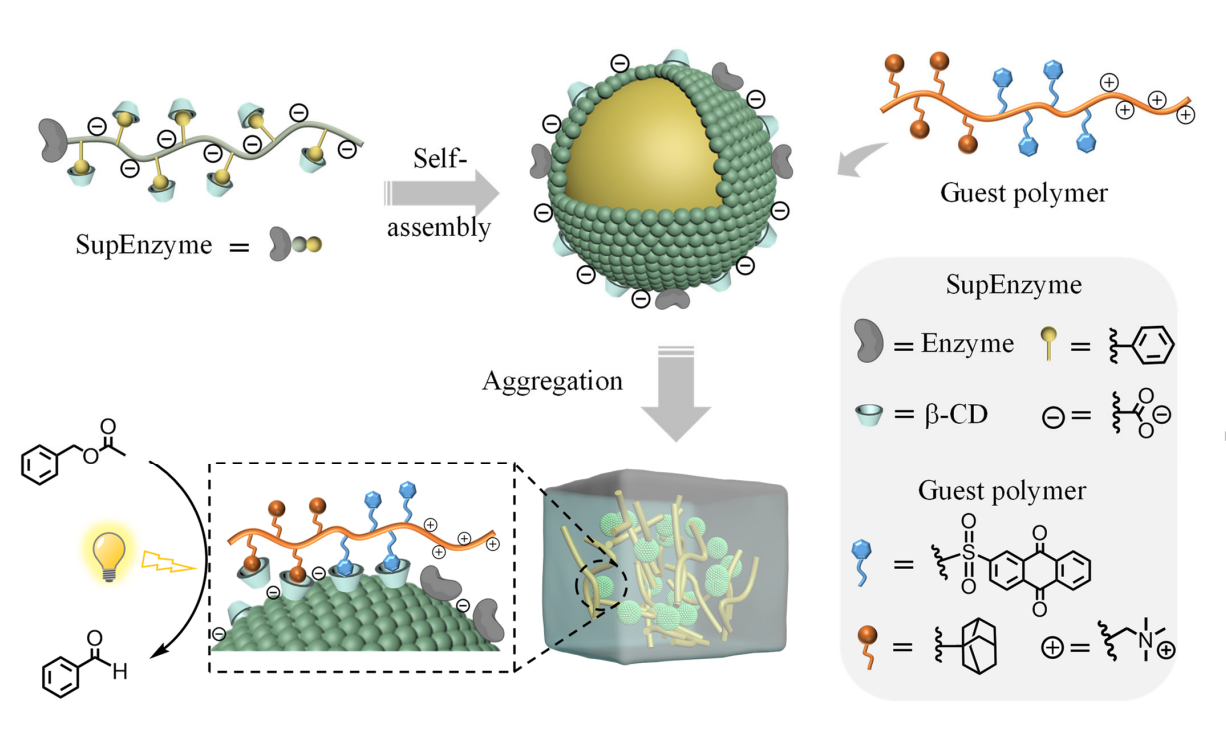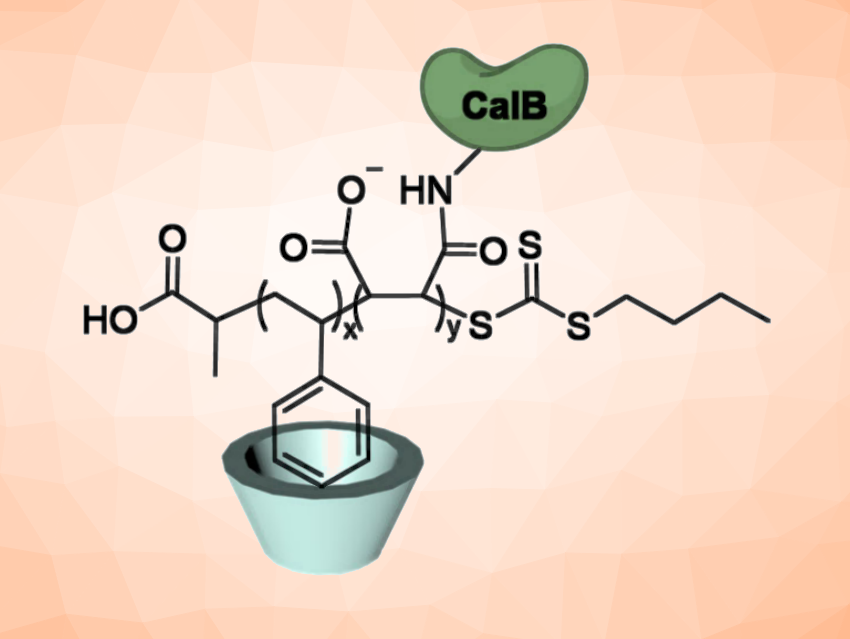Enzymes can be useful as catalysts for chemical reactions in the laboratory or in industry. The range of application of natural enzymes can be limited, but their properties can be optimized using enzyme engineering or chemical modifications.
Changzhu Wu, University of Southern Denmark, Odense, and colleagues have developed a method for the supramolecular modification of enzymes to create recyclable enzyme catalysts. The team combined polymers with the enzyme Candida antarctica lipase B (CalB) to form self-assembled structures that can aggregate and form a heterogeneous catalyst. They prepared a β-cyclodextrin-functionalized styrene maleic acid (β-CD@SMA) copolymer using a reversible addition fragmentation chain transfer (RAFT) polymerization. The copolymer was then reacted with the enzyme to create supramolecular enzymes (“SupEnzyme”, pictured) that self-assemble into nanoparticles (pictured below).

The nanoparticles were combined with the guest polymer poly(adamantane acrylate)-b-(ammonium acrylate), which has adamantane units that can interact with the β-cyclodextrin host units. This leads to the formation of an aggregate that can be used as a recyclable catalyst. Guest polymers can also be used to add photocatalytic properties, which the team demonstrated using poly(adamantane acrylate)-b-(anthraquinone acrylate)-b-(ammonium acrylate), which contains both adamantane and 9,10-anthraquinone groups. Overall, the team’s approach provides a versatile method to create enzyme-based catalysts for new applications.
- Integrating Enzymes with Supramolecular Polymers for Recyclable Photobiocatalytic Catalysis,
Jingping Ouyang, Zhenfang Zhang, Jian Li, Changzhu Wu,
Angew. Chem. Int. Ed. 2024.
https://doi.org/10.1002/anie.202400105



